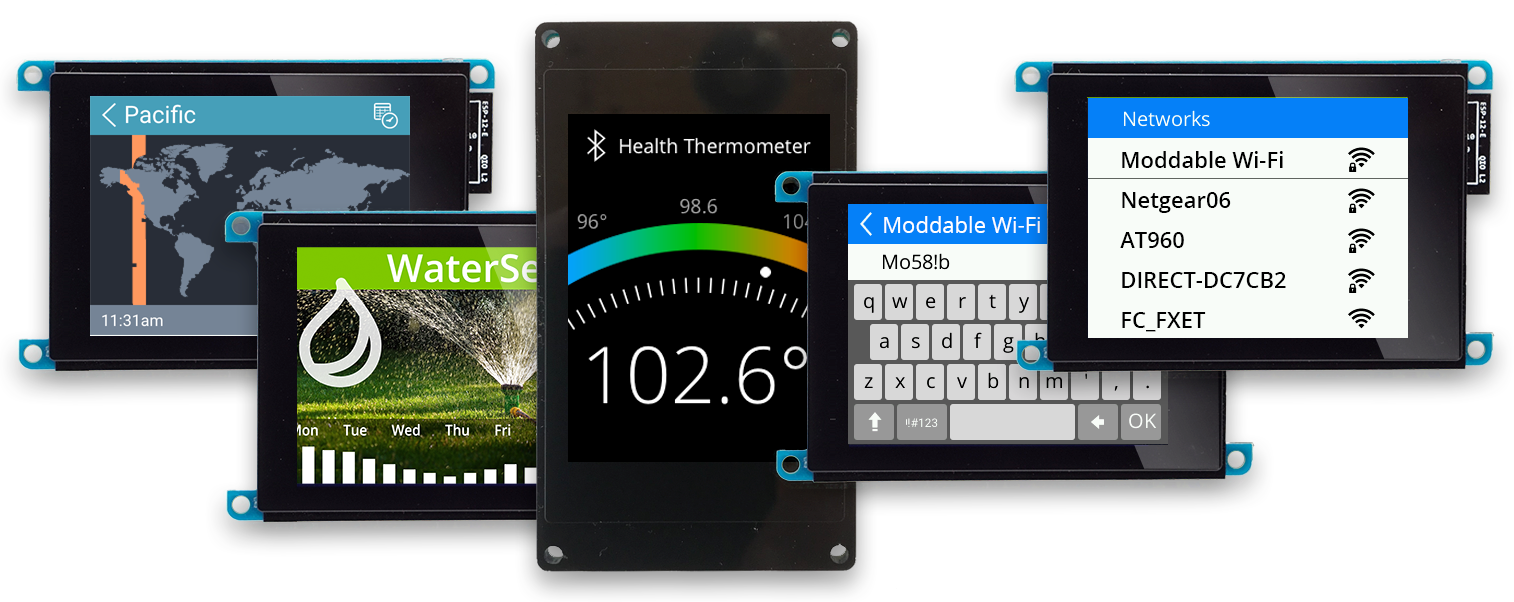Displays Powered by the Moddable SDK
The Moddable SDK supports a wide variety of displays. This page features a collection of animations running on just some of the supported displays. For a quick overview of many of the displays, check out our Box of Displays video.

All of the applications used in these videos are written in JavaScript using the Piu user interface framework with graphics rendered by Poco. Piu, Poco, and the display drivers work together to deliver high quality, optimized rendering on low-cost microcontrollers.
The drivers for all displays shown are included in the Moddable SDK. The documentation and wiring has been tested on the ESP8266 and ESP32. The examples and drivers are platform independent and will run on any microcontroller the Moddable SDK is ported to (including the Raspberry Pi Pico).
The displays and controllers shown here may be obtained from ever-changing sources. Links are provided to sources current at the time of this writing. If you are looking for a quick way to get started with an embedded display, Moddable Hardware line of display modules is a great place to start. These self-contained modules include a microcontroller, networking capability, and a high-quality display with no soldering or assembly required.
Note: It is surprisingly difficult to create high quality video recordings of these displays. The color, crispness, and frame rates of these videos are our best recording efforts. To truly see the display quality, these displays should be viewed in person.